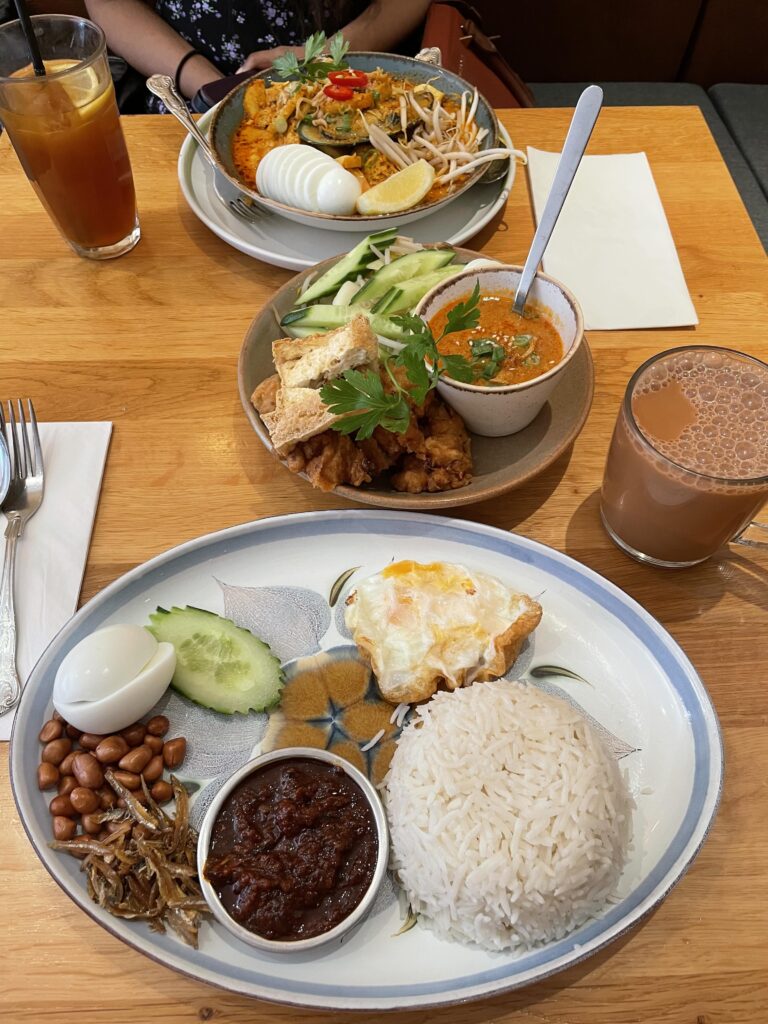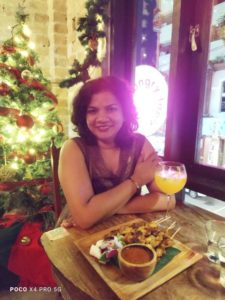
A Taste of Home: Malaysian Food, Identity, and Finding Belonging in Europe
By Neshalatha Govarthnapany
If we ask any Malaysians what they love the most about Malaysia, the answer is always predictable: FOOD. It is so common for people to come together in Malaysia for the love of food, which somehow represents our multicultural scene. Even more so with fusion dishes that combine the different cultures in Malaysia, such as curry noodles or curry-flavoured claypot rice. We take great pride in our food, and we certainly don’t appreciate it when Singaporeans claim to have better food than us!
Now, having lived in Europe for two years, I find myself yearning for Malaysian food. Since my move, I’ve started cooking a lot, from mee mamak to nasi goreng kampung, I find myself appreciating not just our food but also our diverse culture even more. I love how we incorporate many flavours in just one meal, each complementing the other. For instance, nasi lemak: rice cooked in coconut milk, eaten with anchovies, sambal, fried peanuts, boiled eggs, cucumbers, and sometimes additional side dishes like fried chicken. So much flavour in just one dish- spicy, nutty, creamy, crispy, with a mild hint of sweetness, making it perfect. Even more fascinating is the variety within the dish itself; the Malay version of nasi lemak is never quite the same as the Chinese or Indian versions, distinguishable in the way the sambal is
prepared.
During my recent trip to London, I insisted on feasting on Malaysian food, given the many Malaysian restaurants in the city. My friends and I ended up in Chinatown, where not only did we stuff ourselves with good food, but we were also lucky enough to witness a lion dance performance in the restaurant. It made me feel so much at home, missing the vibrancy of Malaysia, reflected in its rich culture. It was a pinch paying 15 British pounds for a plate of nasi lemak, but it was undoubtedly worth it—just for the comforting taste of home.
Often, when Europeans ask me about Malaysian culture, I find it hard to explain the complexity of a multinational society, especially to those from homogenous ethnic countries. Having worked through my own ‘identity crisis’ as a fourth-generation Malaysian-Indian, I’ve come to realise that to describe Malaysia is to be inclusive of every ethnicity and religion, because that is what makes up the whole rather than each community standing alone. The idea of ‘assimilation’ is very different on this side of the world, whereas in Malaysia, we prefer the term ‘integration.’ We accept the different realities, cultures, and religious beliefs that each community holds. In keeping us together, we value respect, tolerance, and
consideration for our differences while also taking them as our strengths.
Just like Malaysian food- what are we without one another? Every dish, every flavour, and every ingredient represents a different part of our society, coming together to create something truly unique. No single component overshadows another; rather, they blend harmoniously. And that is the beauty of Malaysia- our strength lies in our unity, in our differences, and in our ability to celebrate them. So, wherever I go in the world, as long as I have a plate of Malaysian food in front of me, I know that a part of home is always with me.

Neshalatha Govarthnapany (Nesha Pany) is doing her Ph.D specialising in Addiction Science at Charles University, Czech Republic. Recently relocating to Italy as part of her doctoral journey, she embraces the chance to explore Europe while staying deeply connected to her roots in Malaysia. With over a decade of experience in Malaysia’s public healthcare system, she has dedicated her career to serving marginalised communities, including individuals living with HIV and those battling drug addiction. Alongside her research, Nesha practices alternative healing, embodying a holistic philosophy on life and well-being.